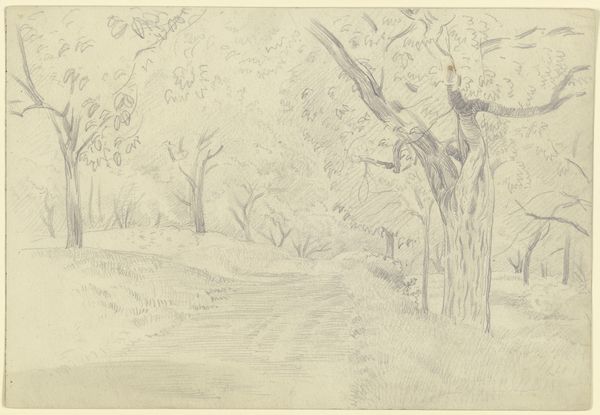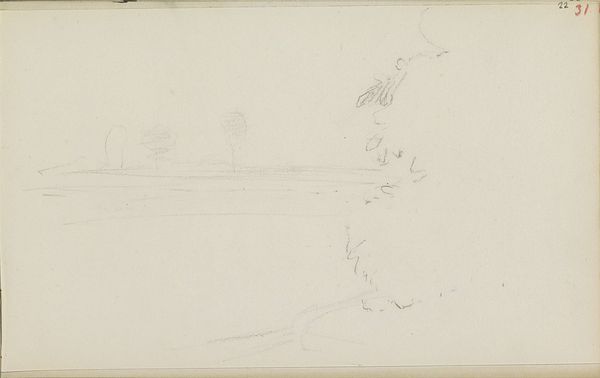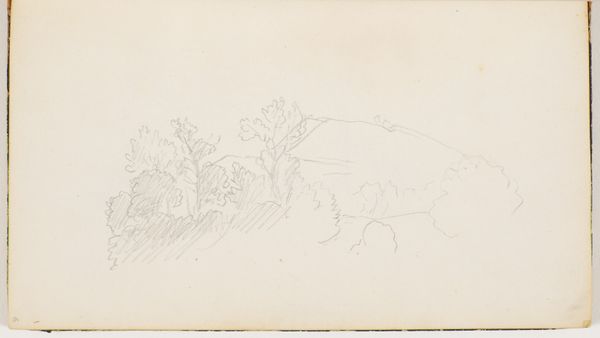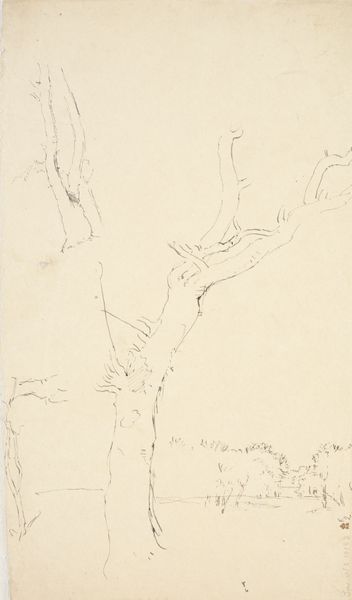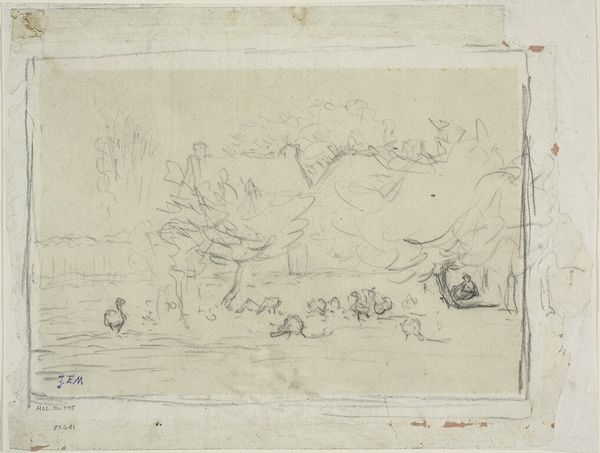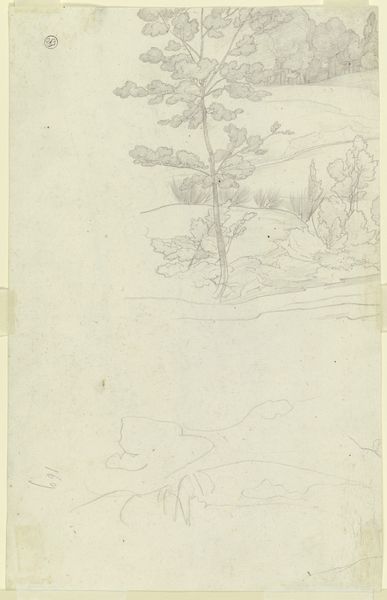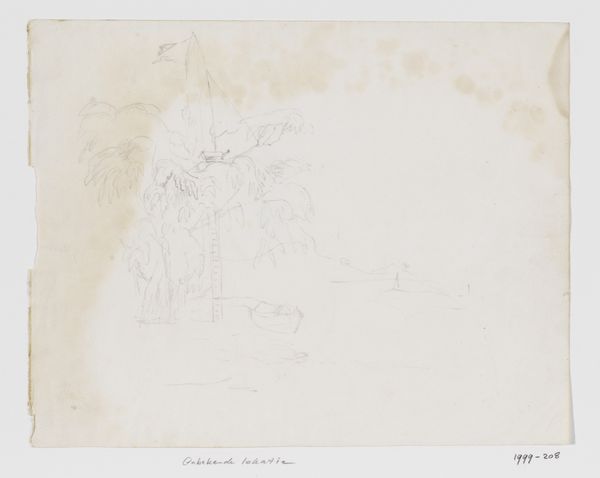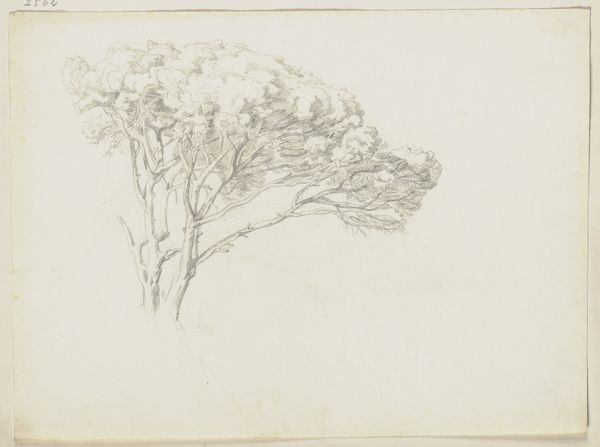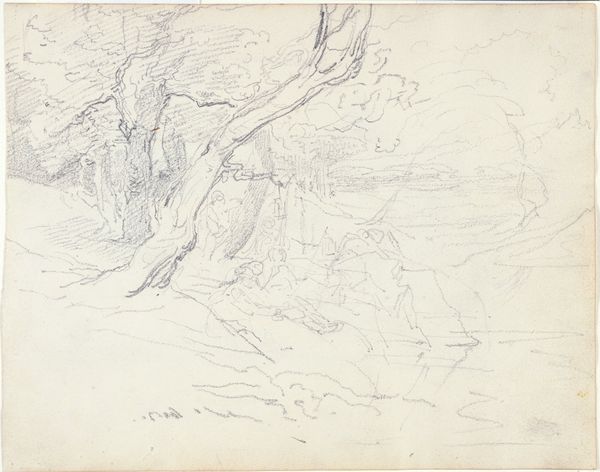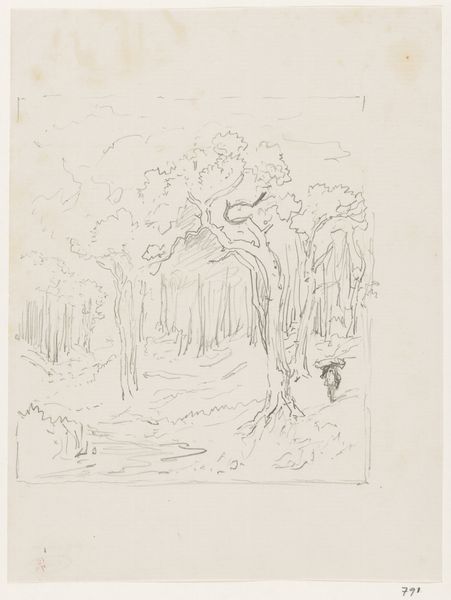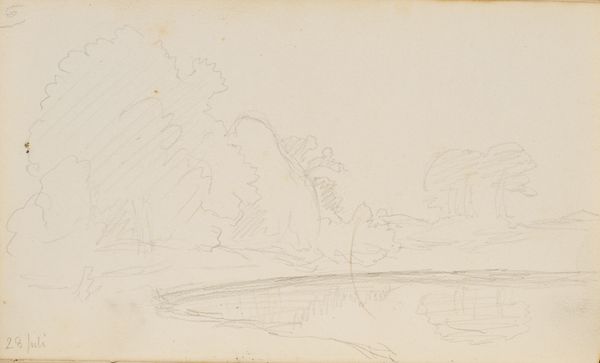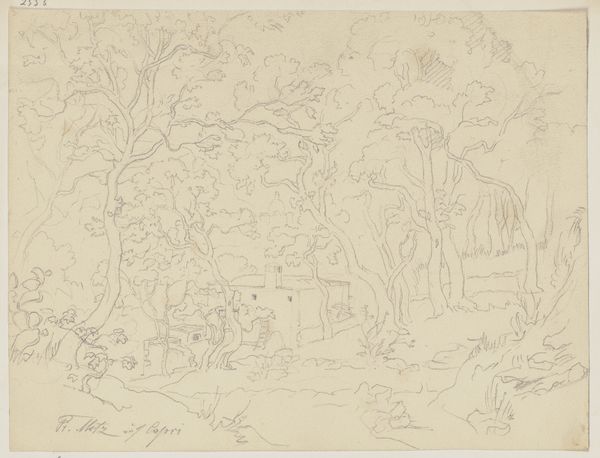
T.v. skovparti med store træer; t.h. studie af tre storke. 1873
0:00
0:00
drawing, pencil
#
drawing
#
landscape
#
pencil
Dimensions: 135 mm (height) x 238 mm (width) (bladmaal)
Curator: This drawing by P.C. Skovgaard, titled 'T.v. skovparti med store træer; t.h. studie af tre storke,' was created in 1873. It's a pencil drawing housed here at the SMK. It depicts a section of woods on the left and, interestingly, a study of three storks on the right. Editor: My first impression is one of lightness and fleeting observation. It has the quality of something quickly jotted down in a notebook – a moment captured. Curator: Skovgaard was deeply embedded within the cultural milieu of his time. He played a pivotal role in shaping Denmark’s national identity through his landscape paintings. You know, within the rise of Romantic nationalism, the cultural elite of the time emphasized the importance of images like this in forming a strong sense of collective identity and national pride. Editor: Absolutely, and those storks – they're not just any birds; they carry potent symbolic weight. Across many European cultures, they signify birth, renewal, and good fortune. Seeing them here, juxtaposed with the forest scene, suggests perhaps the cyclical nature of life, the forest as a space of constant regeneration. It almost becomes a conversation about homeland and return. Curator: The layering in this piece has a fascinating gendered component as well. Skovgaard situates the birds along the top right quadrant while keeping the woods densely clustered below. Are we supposed to regard nature as subordinate, as 'grounded'? And if so, what kind of power structures does it inadvertently end up supporting? Editor: I'm struck by how he manages to convey so much with so little. The sparseness adds to its immediacy. We sense the artist’s eye selecting these details – a kind of intimate encounter between the artist and nature. Curator: Considering Skovgaard's broader body of work and the socio-political context, it provides an important snapshot into 19th-century national identity as related to nature. I see a dialogue with romantic ideals coupled with gender assumptions that demands a second look at how these images affect our modern perception of belonging. Editor: It makes me reflect on how deeply entwined our cultural symbols are with the landscapes we inhabit – even in a seemingly simple sketch. It’s as if Skovgaard is reminding us that these things are never truly separate.
Comments
No comments
Be the first to comment and join the conversation on the ultimate creative platform.

